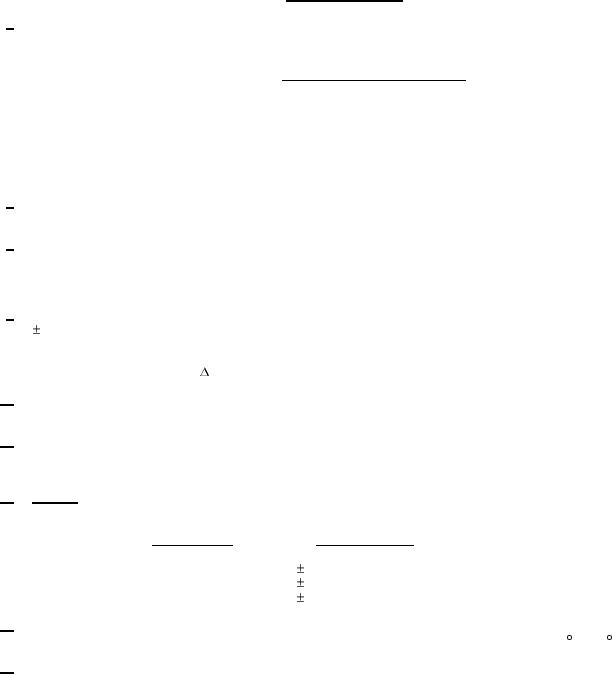
MIL-PRF-1/1718A
TABLE I. Testing and inspection - Continued.
6/
The noise ratio shall be defined as the ratio of the IF attenuation required to reduce the output noise level with the TUT installed to
that value when the TUT is removed from the circuit. The noise ratio can be determined from the following equation:
[anti log (0.1Y ) - 1]
anti log (0.1 F)
Nr = 1 +
2
Where F = Receiver noise figure in dB.
Y = IF attenuation required to reduce the output noise level with the TUT installed in the circuit to that with
the TUT removed from the circuit.
NOTE: The denominator in the second term is applicable only if no preselector is used.
7/
After the completion of this test, the TUT shall satisfy all requirements of method 4471 (recovery time), as specified in
conformance inspection, part 1.
8/
The specified air pressure shall be applied to the input window of the TUT for a period of 30 minutes, after which the pres sure shall
be reduced to atmospheric pressure. This test shall be performed by immersing the seal and tube flange in water. The maximum
allowable leak rate shall be one bubble per 30 seconds. Bubbles due to occluded air shall be disregarded. This test shall be
performed for the number of cycles specified.
9/
The tube shall be terminated with a type 1N21E crystal mounted in a crystal holder and be provided with a dc ground return of 100
10 ohms. At the beginning of the life test, the crystal noise figure (NF) shall meet the minimum requirements for the type 1N21E
crystal under the standard specified conditions. The initial crystal noise figure shall be measured and recorded. The crystal noise
figure shall be remeasured periodically during the course of life testing. Life test shall be considered completed when the 1N21E
crystal noise figure degradation ( NF) from the initial value has exceeded the specified limit.
10/
One crystal failure will be allowed during the life test. If a crystal failure occurs, a new crystal shall be inserted in the mount and the
life test shall continue for a minimum of 200 hours, even if the life test is extended beyond the required 2,000 hours.
11/
The TUT shall be shocked 5 times in the direction shown in figure 1 when actual mounting conditions are simulated. The TUT
shall be capable of satisfying all requirements of this document without damage or failure before, during, and after being subjected
to the specified shock test.
12/
Vibration. The TUT shall be capable of satisfying all requirements of this document without damage or failure before, during, and
after being subjected to the specified vibration test with the amplitude as specified herein.
Frequency (Hz)
Amplitude (Inches)
5 to 15
0.075
.012 (0.150 Total displacement)
16 to 25
0.050
.008 (0.100 Total displacement)
26 to 33
0.025
.004 (0.050 Total displacement)
13/
The TUT shall perform as specified herein without degradation of performances when its operating or nonoperating humidity
environment has a relative humidity up to 95 percent, including condensation at any temperature up to 50 C (122 F).
14/
The TUT shall not exhibit damage or degradation of performance resulting from spurious signals within F1 through F2 and with
incident power = 5 kw maximum.
4